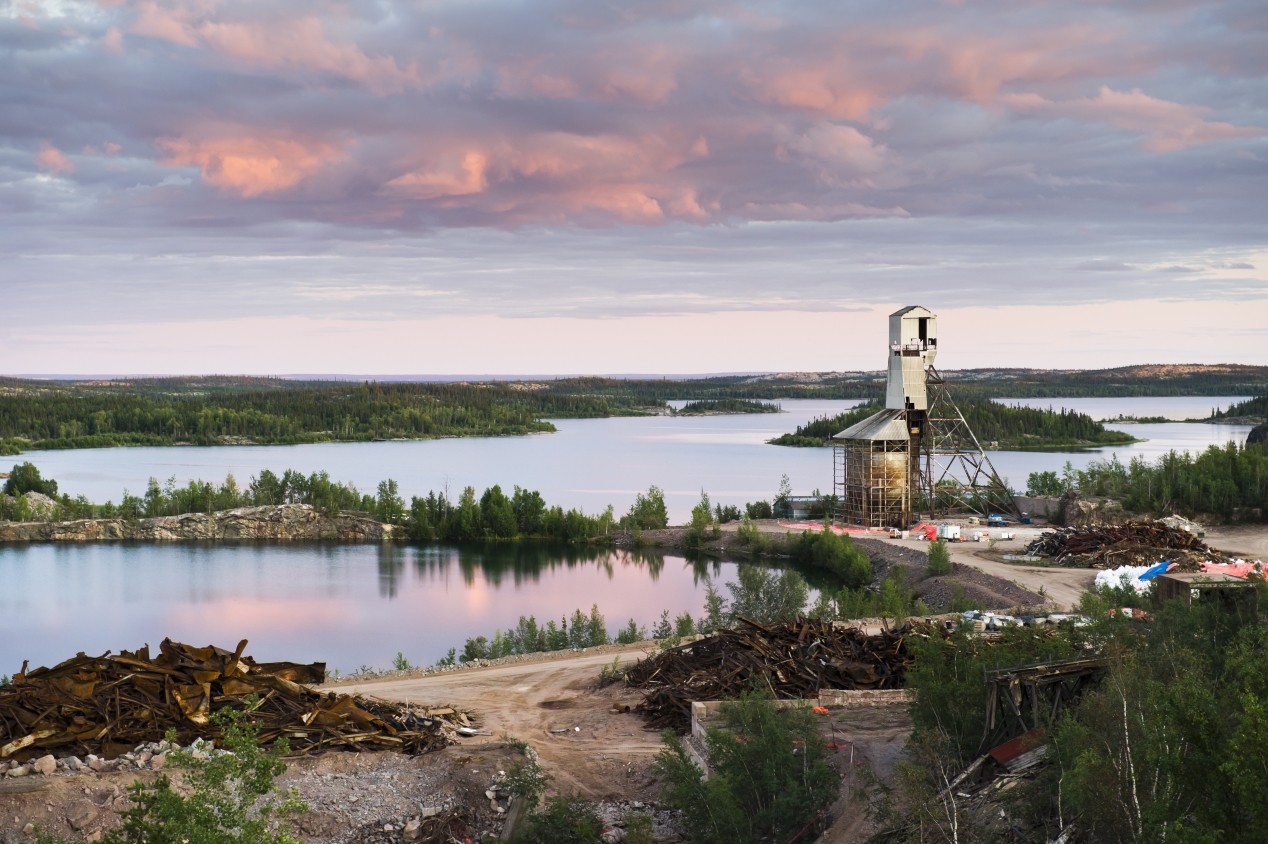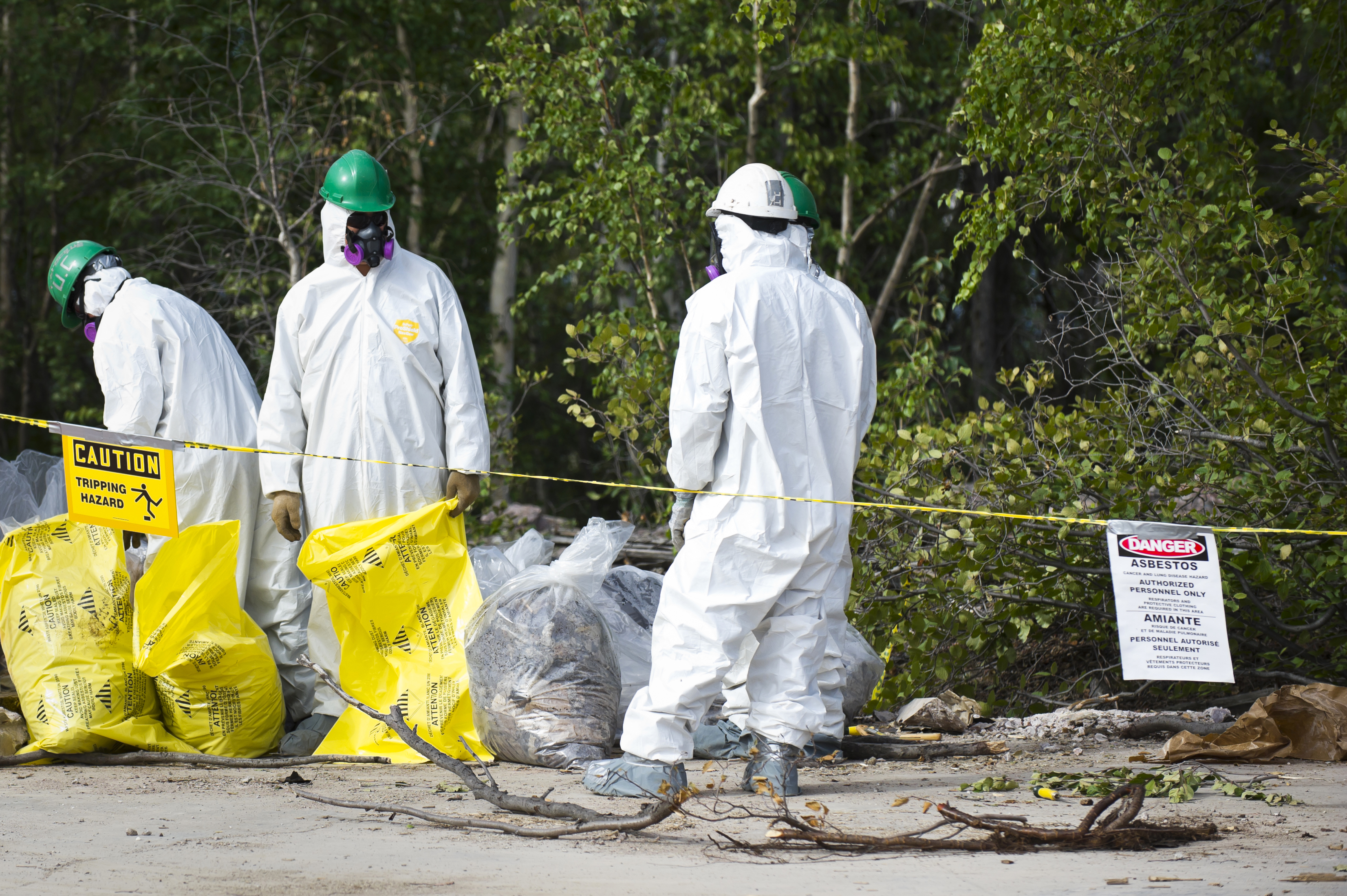
This is part two in the series on the history of the Gunnar Mine, based on the book Gunnar Uranium Mine: Canada’s Cold War Ghost Town written by SRC's President Emeritus, Dr. Laurier Schramm. SRC is managing the Gunnar Mine and Mill Site remediation, as well as 36 other abandoned uranium mine sites in northern Saskatchewan. Learn more about the Gunnar Remediation Project.
This is a contributed post written by former SRC President and CEO, Dr. Laurier Schramm.
Part one of this series summarized the evolution of Gunnar, from discovery of the uranium deposit in 1952 through construction of the mine, mill, and town, and its operations as what was, for a time, the largest uranium producer in the world. In classic “boom and bust" fashion, however, Gunnar’s heyday ended abruptly in 1964, and without any decommissioning or reclamation. That same year, the Gunnar townsite population dropped from 800 to 1. The entire Gunnar site had become a ghost town.
If the bright sides of the Gunnar operation were its uranium production, the economic benefits for Saskatchewan, and the strategic benefits for Canada and its allies, then the dark sides were the legacy of its abandoned facilities, flooded mine, tailings, and waste rock.
What was left behind
During its operating years, tailings from the milling processes were pumped to tailings ponds that began with Mudford (Blair) Lake, overflowed into a second tailings area, and then overflowed again into Langley Bay in Lake Athabasca. The total amount of tailings released into the environment is estimated to have been 130,000 m3 (4.4 million tonnes) and having a surface area of about 22 hectares.
Nearly three million cubic metres of overburden and waste rock were ultimately produced. Most of it was placed in two large piles, covering about 10 hectares, near the mine pit and adjacent to the lake.
The Gunnar Mining company itself morphed into several other companies over the years, but even its successors appear to have gone out of business by 1984.
Post-closure, the town was mostly uninhabited in the next two decades. For some years the townsite was partially inhabited for weeks to months at a time, between spring and fall, by teams of exploration geologists. A fish processing and packaging operation was established at Gunnar in 1971, and operated for ten years before it too closed down. Through the next three decades there was no significant activity on the site: the facilities lived on as a ghost town.

Structural and environmental hazards
Gunnar’s surviving legacy after some fifty years of neglect was a myriad of hazards. The hazard most people think about is radiation, and the Gunnar site had its share of such hazards. These ranged from direct exposure to gamma radiation from radioactive materials, to inhalation of radon, to inhalation of radioactive dust blown from the tailings, to ingestion of radionuclides by drinking water or eating fish from Langley Bay or the flooded open pit.
Some other hazards were less obvious at first, but no less potent. For example, the headframe, mill, and other mine buildings had deteriorated to the point of being structurally unsafe, as had the residences, school, and community centre.
To make matters worse, virtually all of the structures contained asbestos, in one form or another. To Gunnar’s builders, asbestos fibre was highly regarded for its insulating and fireproofing qualities – both vitally important in a remote northern location. Asbestos could be used as solid sheets, siding, and shingles, spray-applied, and even incorporated into other materials, such as construction blocks.

As a result, asbestos was widely used throughout the site, from mine and mill buildings, to the residences, school and shopping mall, to the utilidors that interconnected everything. As the infrastructure degraded over the years, the asbestos became exposed in virtually every structure.
Cleaning up the past
In 2006, the Government of Saskatchewan contracted SRC to manage the environmental assessment requirements and rehabilitation activities. SRC began with community engagement and an environmental assessment process.
The greatest immediate hazards were associated with the more than 80 deteriorating buildings and other structures, including the headframe, virtually all of which had to be demolished.
The next highest priority risk management needs were human gamma-ray radiation exposures and reductions in radionuclide leaching from waste rock and tailings into areas frequented by fish.
The work to remediate the tailings areas, former acid plant area, open pit, demolition debris, and the waste rock locations are still underway and/or pending.
SRC plans to ultimately transfer the entire remediated Gunnar Site into the Saskatchewan Government’s Institutional Control Program, under which the need for continued maintenance should be minimal, while allowing for a renewal of most traditional uses across much of the site.

What have we learned?
The Gunnar story illustrates a marvel of engineering and industrial creativity given the geographical location and the period in history in which it was designed, built, and operated. The remediation of the Gunnar site provides another story, that of using modern science and engineering to deal with the hazards and the clean-ups in the aftermath of such industrial activities.
The second story also demonstrates that cleaning-up such legacy hazards from the past can be a huge undertaking, and tremendously expensive. The key lesson is that mine and mill remediation and reclamation are best considered, planned for, and budgeted for at the beginning (before mining ever begins), as part of a comprehensive, full-cycle approach to uranium development.
Reference
Schramm, L.L., Gunnar Uranium Mine: Canada’s Cold War Ghost Town, Saskatchewan Research Council, Saskatoon, and Amazon.com Inc., 2016.
